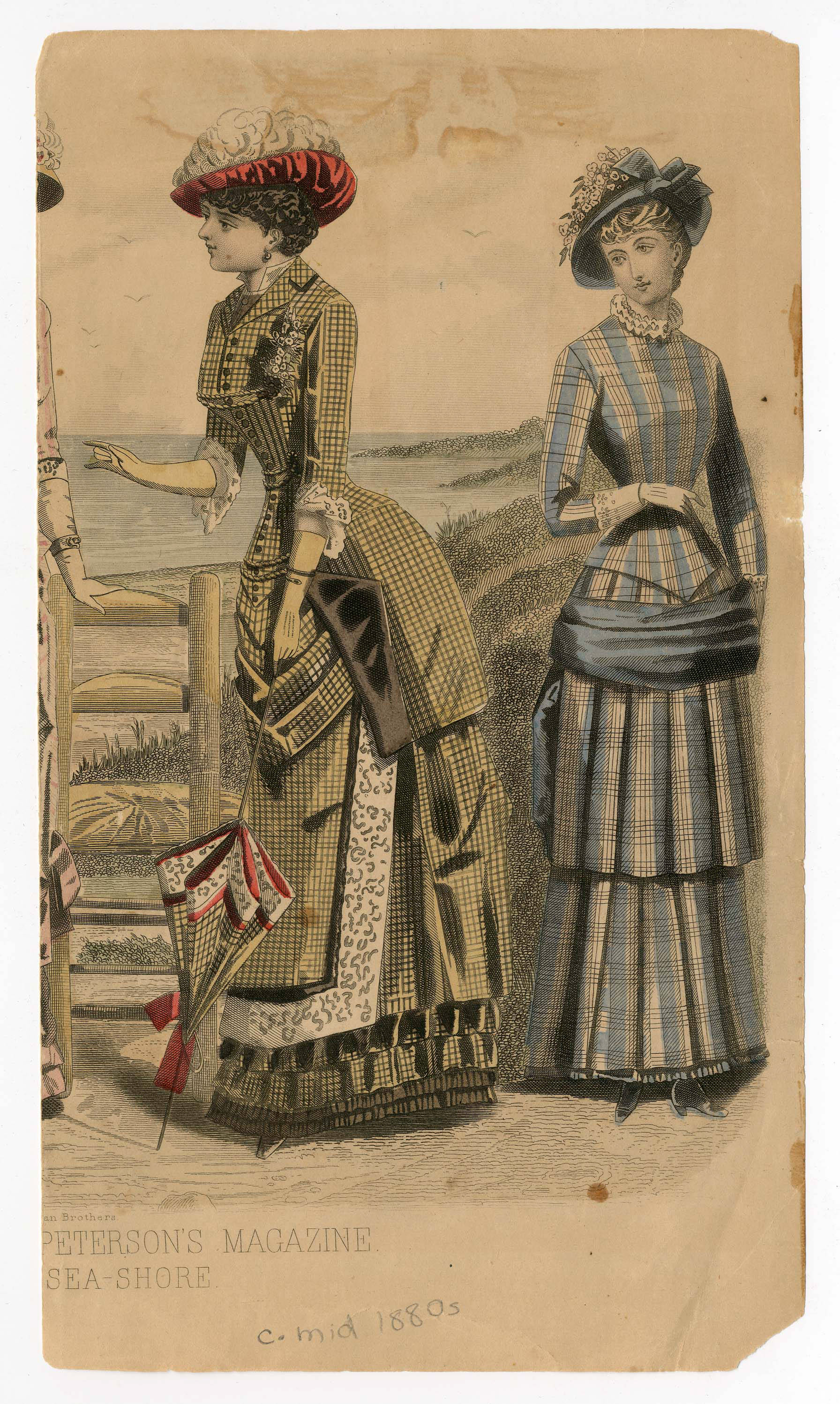1870 Fashion Plate
The shape of dresses in the 1870s were more extreme than the decade pervious. By the end of the 1860s the dresses had fullness at the back and by the 1870s that fullness turned into a bustle.
The bustle greatly changed the silhouette of the dresses, the sides of the dresses were drawn far back creating a narrow front and more volume to the back. The fit of the skirts were tighter at the hips with a fullness near the thighs.
For the first four years of the 1870’s a fashionable outfit would consist of a short waisted fitted basque bodice with a short hip length peplum. By 1873 the bustles were set very high in the back and were almost horizontal. By 1874 the waist lines transformed to a hip length basque that would be worn with a separate skirt and overskirt.
1874 Fashion Plate
Overskirts were knee-length and had an apron-shaped drape. In the mid 1870s, a longer basque was introduced that was called a cuirass.
Most dresses at this time had trains. But by 1876 women traded the high-set bustle for a lower-waisted more low fitting silhouette. The shoulder seam was a more natural fit compared to the dropped fit it had the decade prior. The drooped shoulder was no longer is style
The necklines in the 1870s began to change and vary from the decade earlier; the base of neck was still a popular neckline placement but now they were in square or v shapes.
1877 Fashion Plate

1880 Fashion Plate

